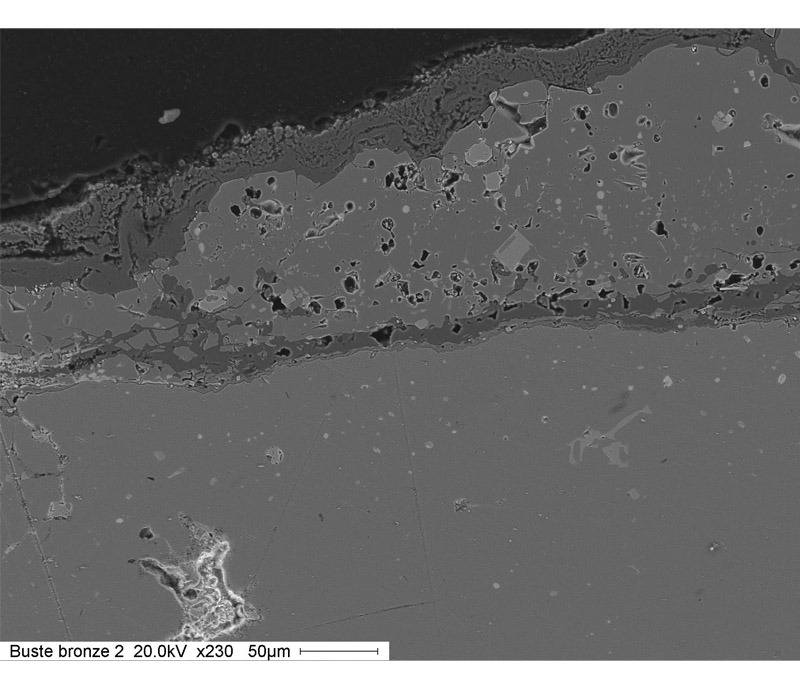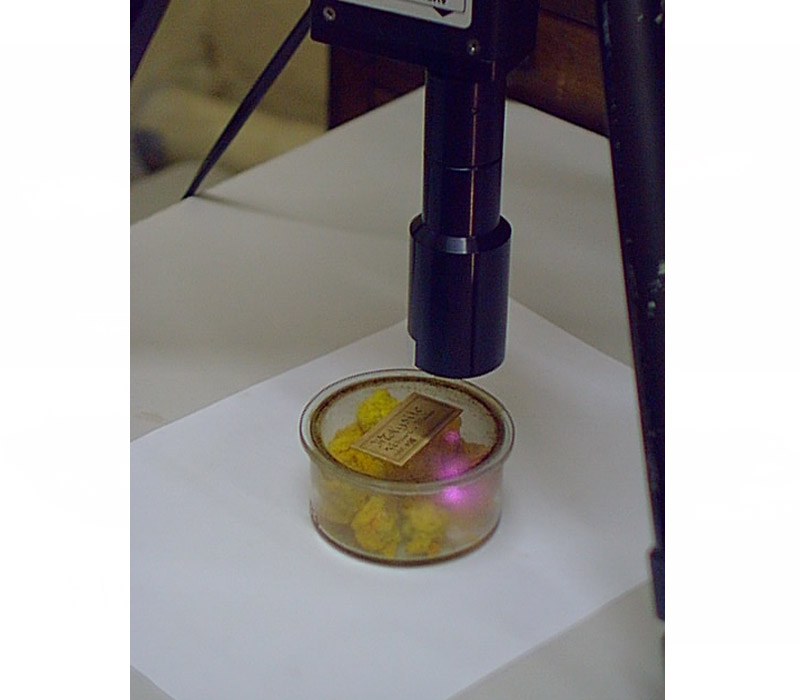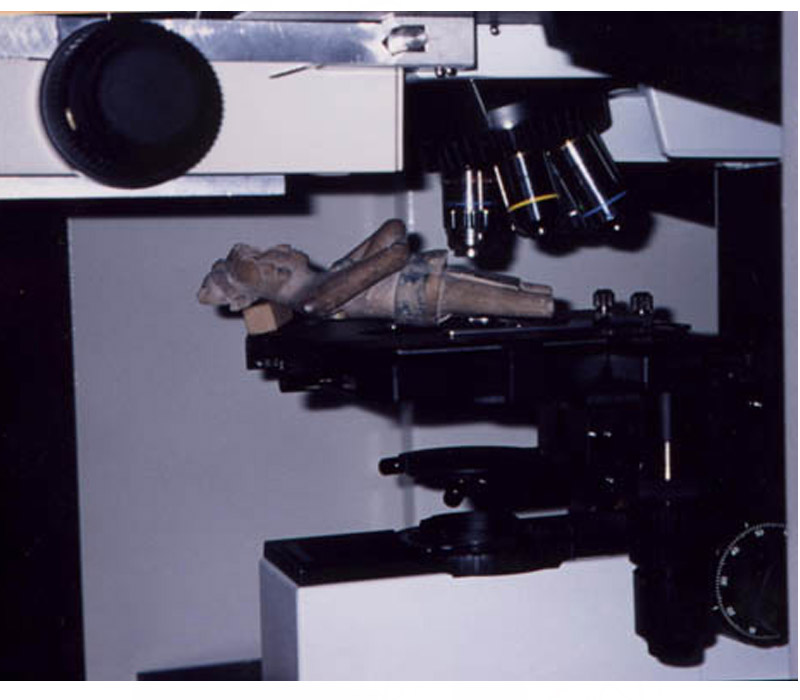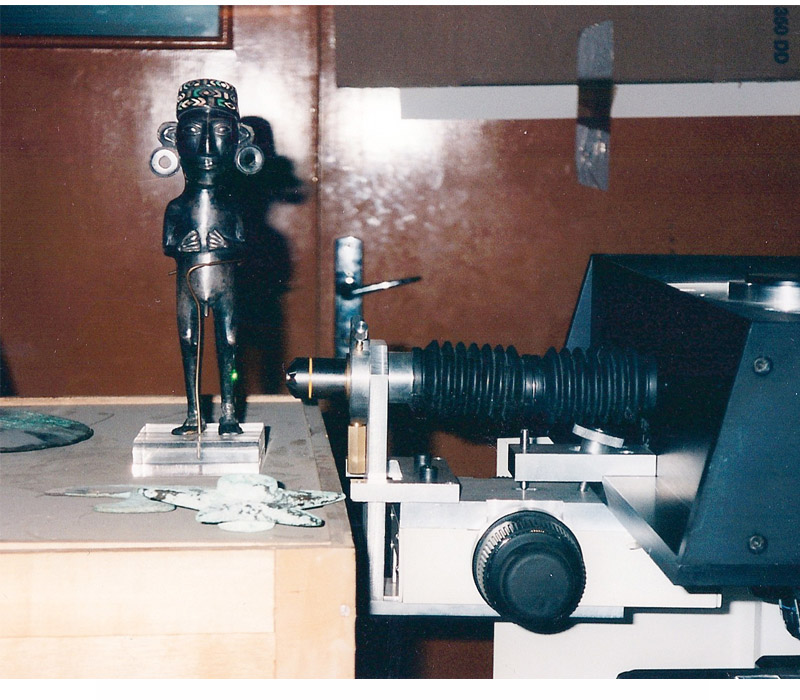• Environmental scanning electron microscopy coupled with Energy dispersive spectroscopy (ESEM-EDS):
Energy dispersion spectrometer (EDS) provides the elemental composition of pigments in a painting (e.g. Fe for iron oxides, Hg for cinnabar, As for realgar, Cu for azurite, etc..) or helps to determine the chemical content of the different chemical elements (e.g Si, Ca, K, Na, Mg, Fe, etc. in siliceous-based objects). The scanning electron microscopy (SEM) allows, among others to view high-magnification morphology and arrangement of crystals and fibers in a sample.
• Portable X-ray fluorescence spectroscopy (XRF) :
Portable X-ray fluorescence device (XRF) allows to determine the exact composition of e.g. an alloy without making any sampling. It provides the elemental composition of pigments in a painting (e.g. Fe for iron oxides, Hg for cinnabar or vermilion, As for realgar, Cu for azurite, etc..) or the content of light and metallic elements (e.g. Si, Ca, K, Mg, Fe, Cu, etc..) in siliceous objects. XRF is also a perfect tool to detect toxic inorganic elements such as lead, arsenic or mercury.
• Electron microprobe (EMPA) :
Electron microprobe as EDS (energy dispersive spectrometer), can perform extensive quantitative analysis. These techniques allow for example to characterize the composition of a metal alloy and therefore to assess the adequacy of this alloy and its alteration with the attributed date of the object.
• Inductively coupled plasma mass spectroscopy (ICP-MS) :
CP-MS is a thorough analytical technique that provides ppm (parts-per-million) concentrations that allows for example to determine the trace elements concentration in an objects (eg, vanadium (V), thorium (Th), lead (Pb), etc.. in glasses or ceramics). These elements can often help to determine the geographic source of raw materials used for the manufacturing.
• Nano-SIMS

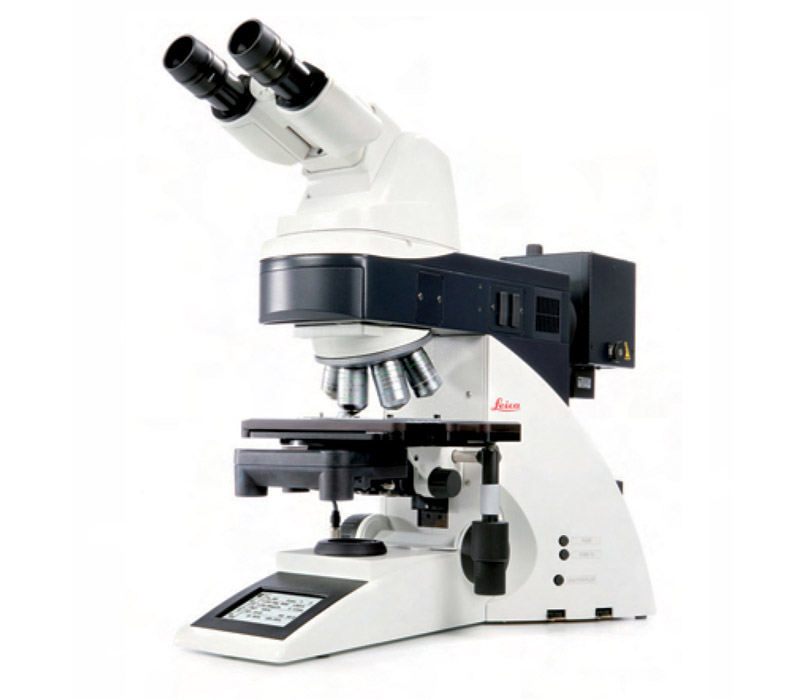
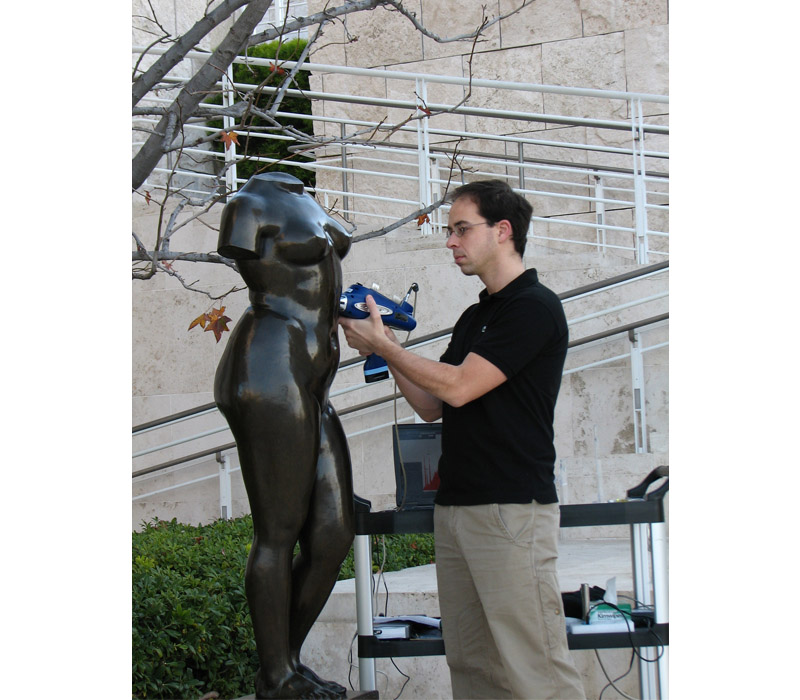
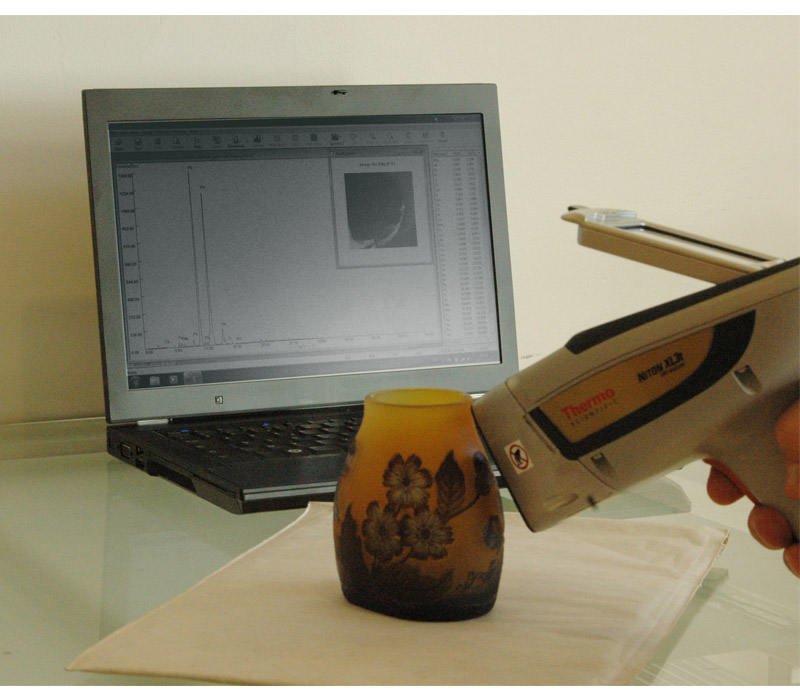
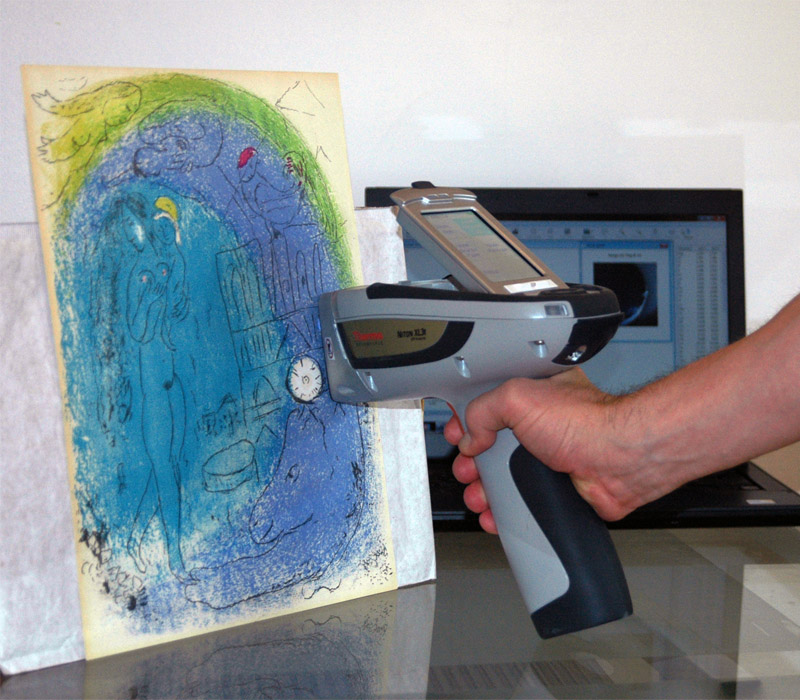
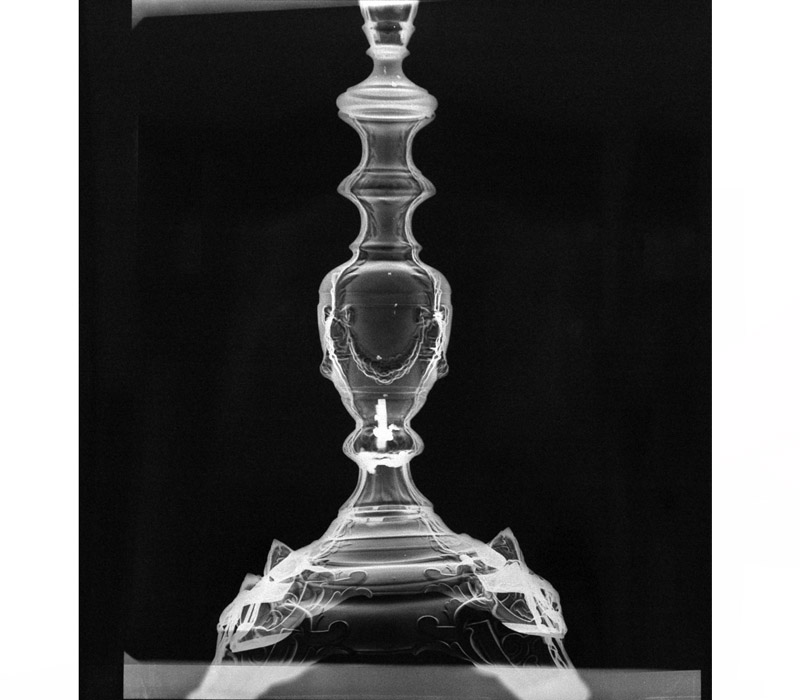
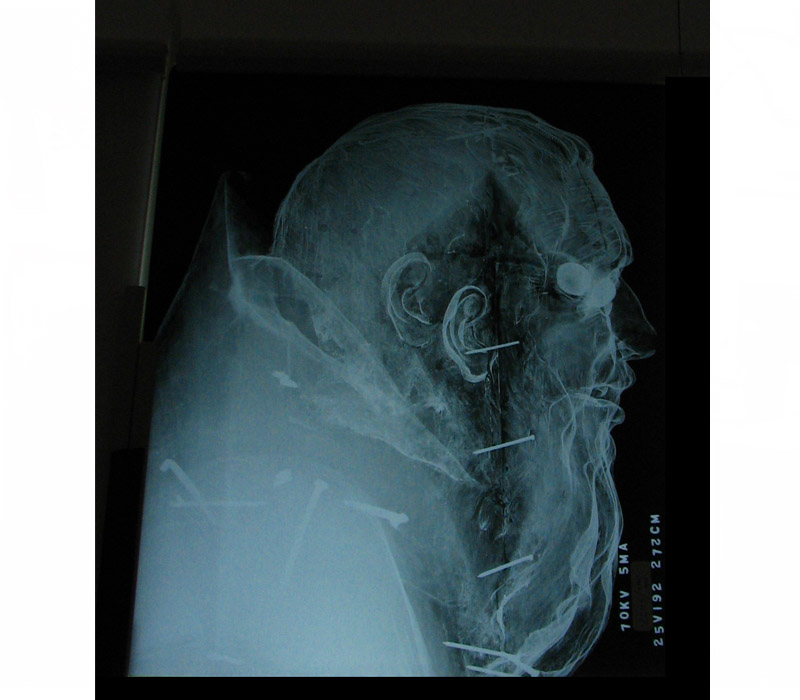
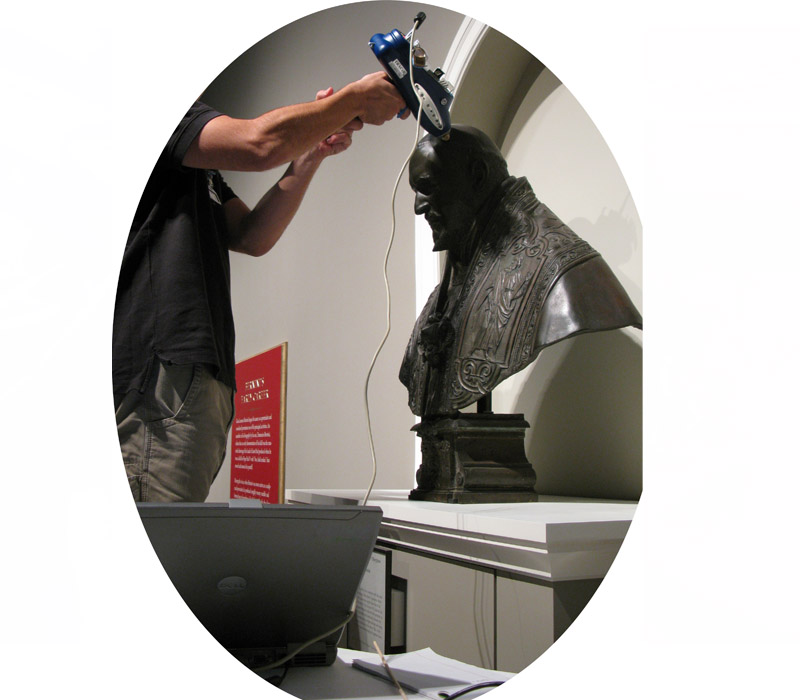
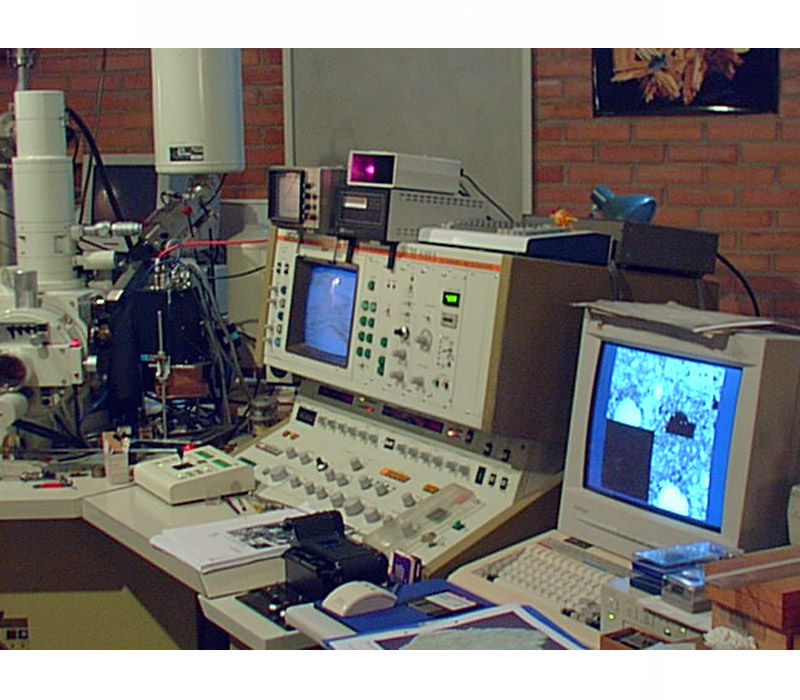
![montrant les structures octaédriques de MgO6 des sels d’altération de humberstonite [K3Na7Mg2(SO4)6(NO3)2∙6H2O] sur une sculpture de William Turnbull (1982). Image par microscopie électronique (SE)](https://www.caraa.fr/wp-content/gallery/tech_elementaires/Inst16-1.jpg)
